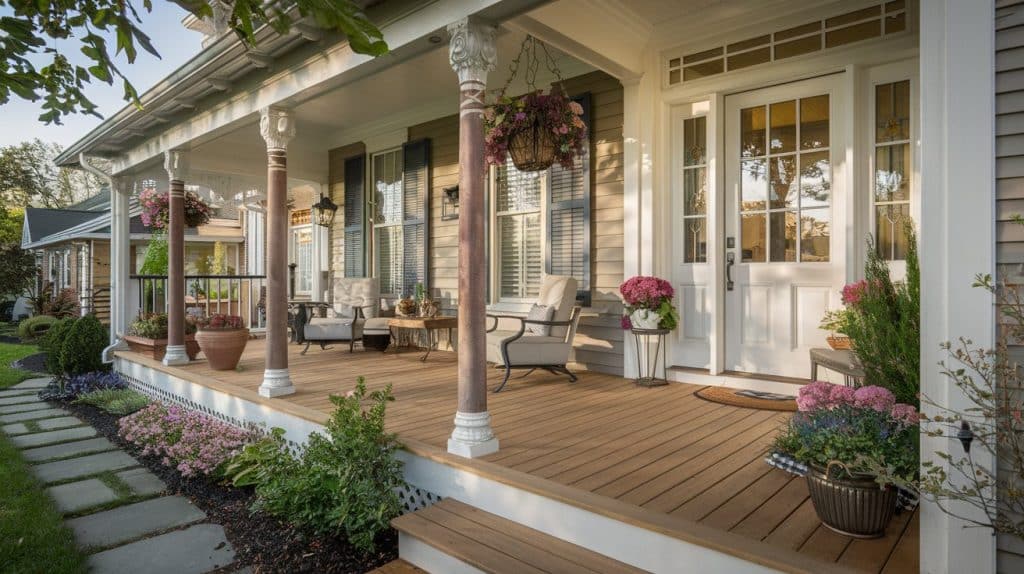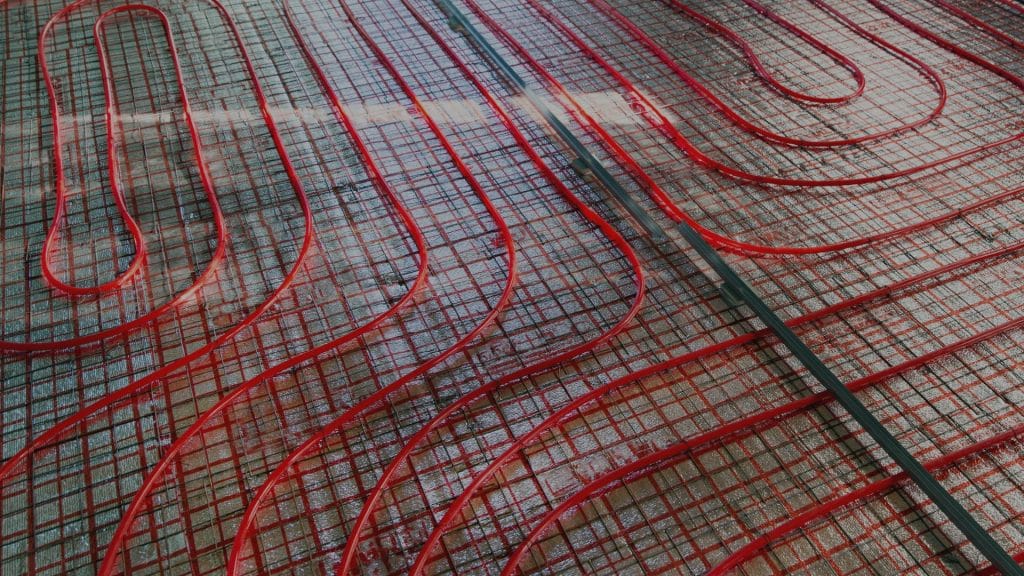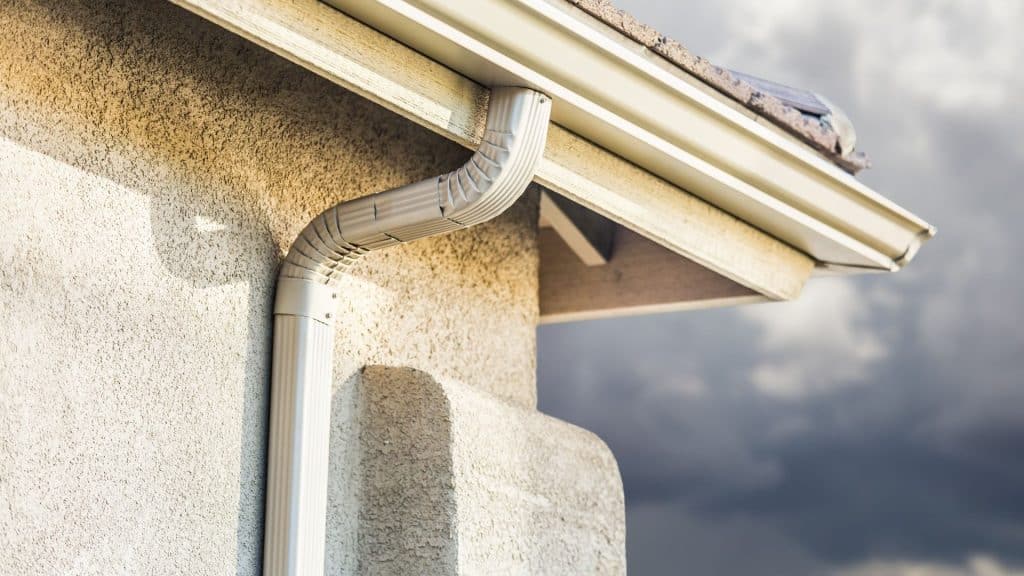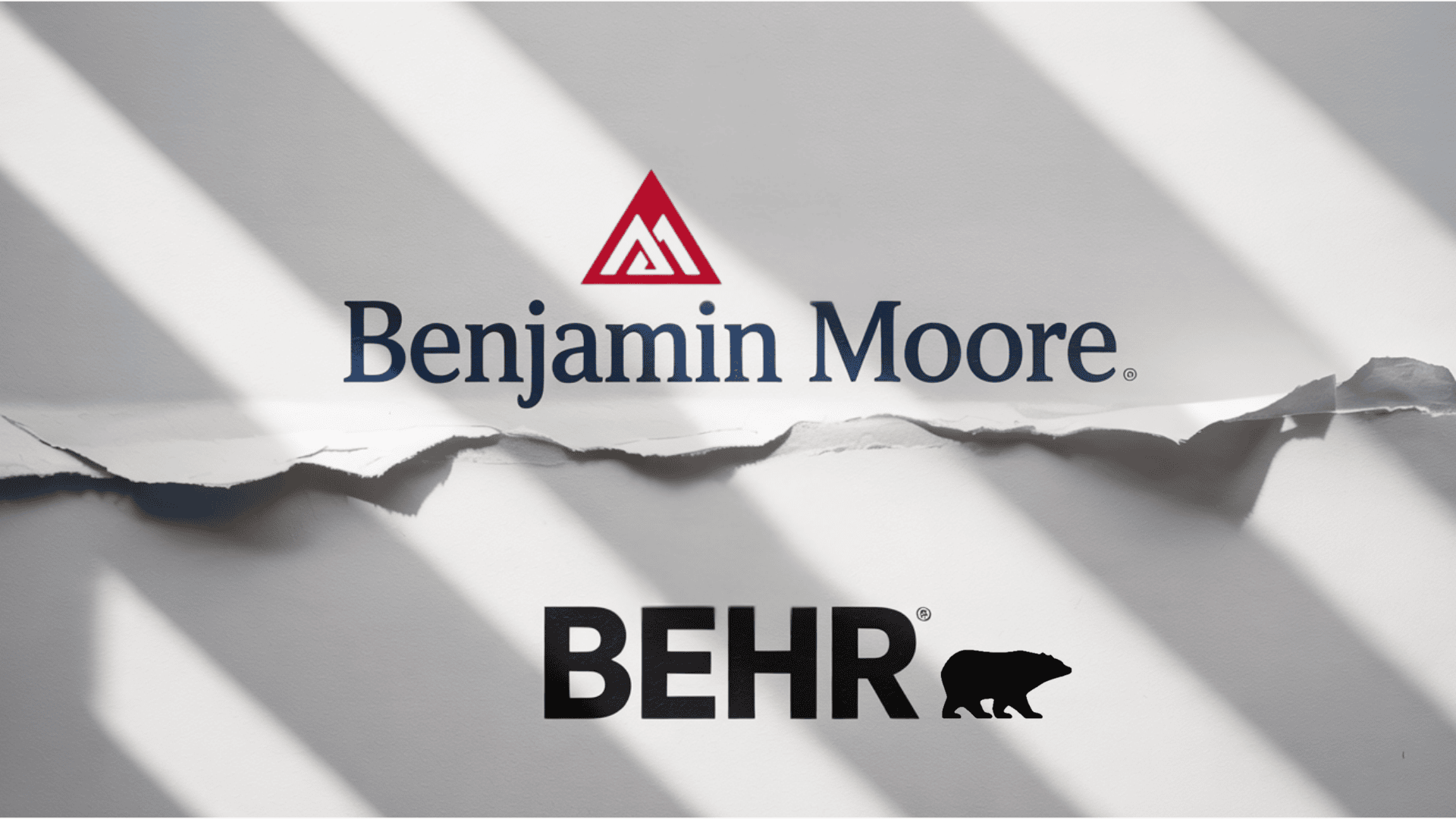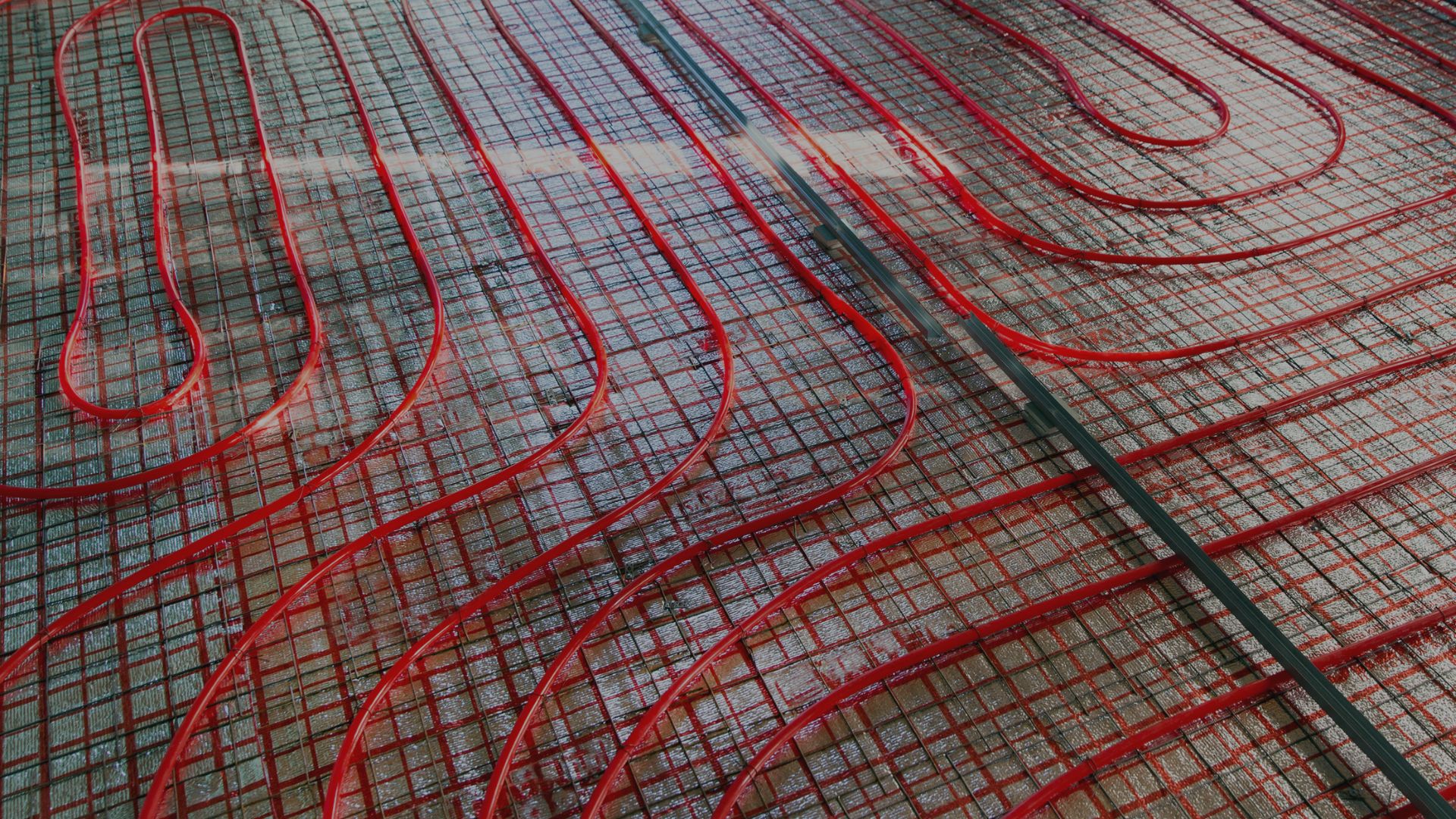Ever noticed how some homes instantly feel more inviting than others?
Often, it’s because of the porch. A porch is a covered outdoor structure attached to your home’s entrance or side. It creates a sheltered transition space between your yard and interior rooms.
Unlike patios or decks, porches always include a roof for shade and weather protection. Today, owners are once again learning why types of porches matter for comfort, style, and property value.
From screened retreats to wraparound designs, the right porch changes how you use your outdoor space.
This guide breaks down the major porch types, their key features, and which style works best for your home and climate.
Different Types of Porches
A porch adds character to any home. But not all porches serve the same purpose.
Some welcome guests at your front door. Others create a private retreat in your backyard. The right porch type depends on how you plan to use the space, your home’s style, and your local weather.
Let’s see the most common types of porches and what makes each one special.
1. Front Porch (or Portico)
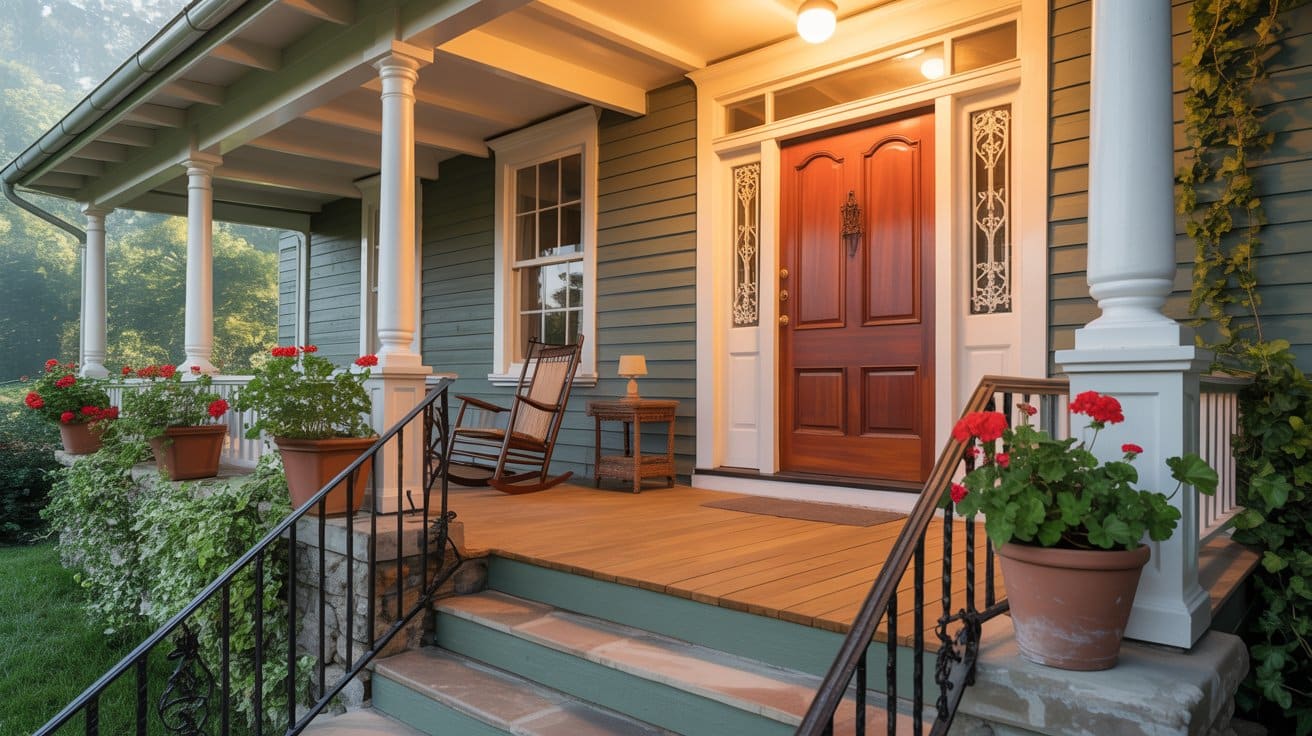
A front porch sits at your home’s main entrance. It creates a covered transition between the outdoors and your front door. This type of porch makes a strong first impression and boosts curb appeal.
Key Features:
- Covered roof supported by columns or posts
- Often includes steps leading to the door
- Space for a bench, chairs, or planters
- Can be small (portico) or wide enough for seating
Pros: Increases home value, protects the entry from rain and sun, and provides space to greet visitors
Cons: Requires regular maintenance and may need permits in some areas
2. Back Porch

A back porch connects your home to your backyard. It typically attaches to your kitchen or living area. This porch type offers more privacy than a front porch.
Key Features:
- Located at the rear of the house
- Direct access to the yard or garden
- Often larger than front porches
- Can be left open, covered, or screened
Pros: More private than street-facing porches, great for entertaining, and extends the indoor living space
Cons: Less visible from the street (no curb appeal boost), and may need additional landscaping for privacy
3. Open or Covered Porch
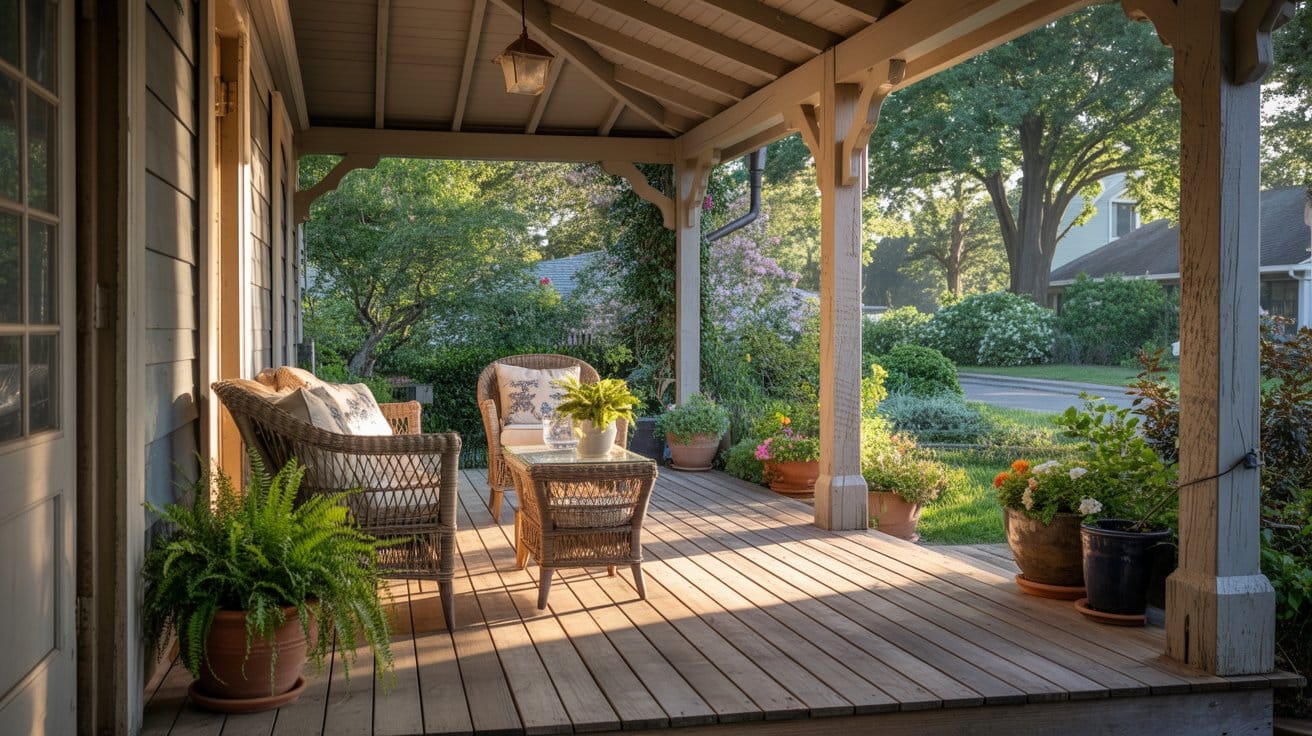
An open porch has a solid roof but no walls or screens. Air flows freely through all sides. This design works well in warm climates where shade matters more than insect protection.
Key Features:
- The roof provides shade and rain protection
- Open sides allow breezes
- Can be attached or detached (pavilion style)
- Often includes ceiling fans
Pros: Good airflow keeps the space cool, easy to access and walk through, and lower cost than screened options
Cons: No protection from bugs, and furniture gets exposed to wind and rain
4. Screened Porch
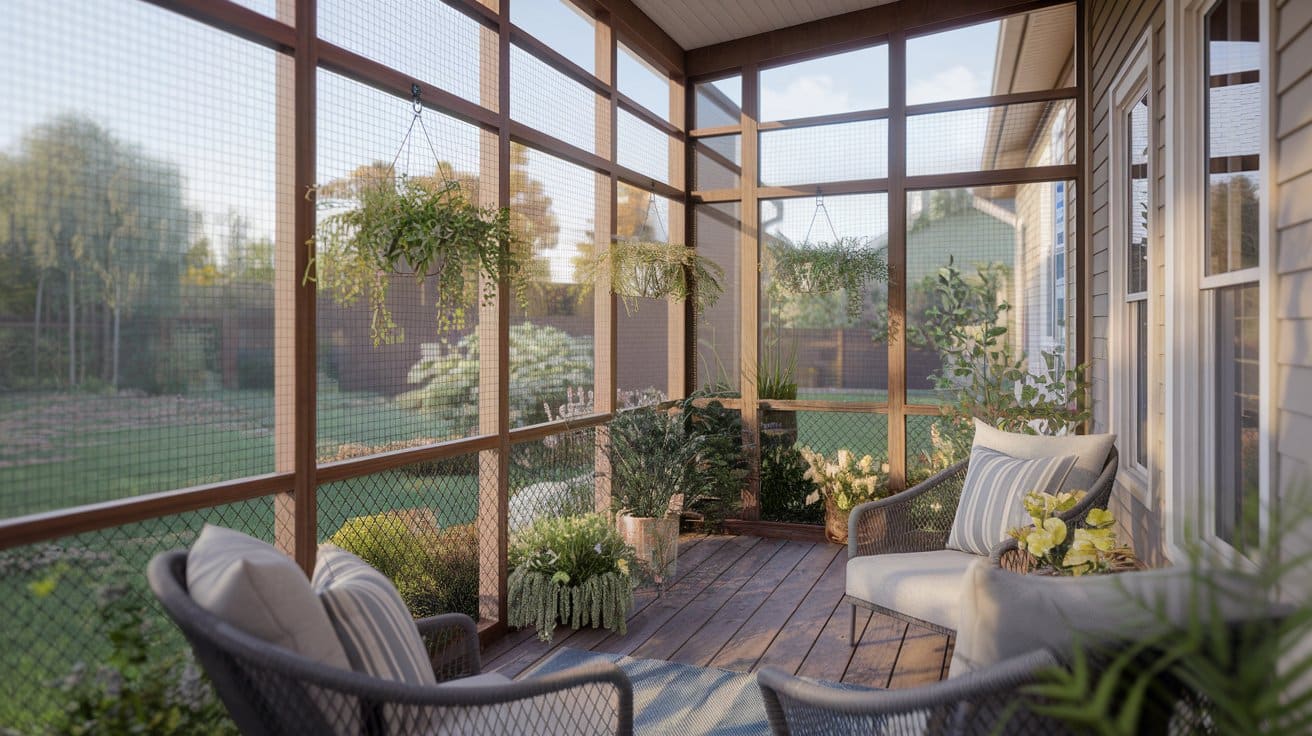
A screened porch combines a roof with mesh screens on the walls. The screens block insects while letting air flow through. This makes it one of the most comfortable types of porches for summer use.
Key Features:
- Mesh screening on all sides
- Covered roof for shade
- Screen door for entry
- Often includes ceiling fans or lighting
Pros: Keeps insects out, usable during rain, and adds value to your home
Cons: Screens need maintenance and repair, block some views, and are more expensive than open porches
5. Wraparound Porch
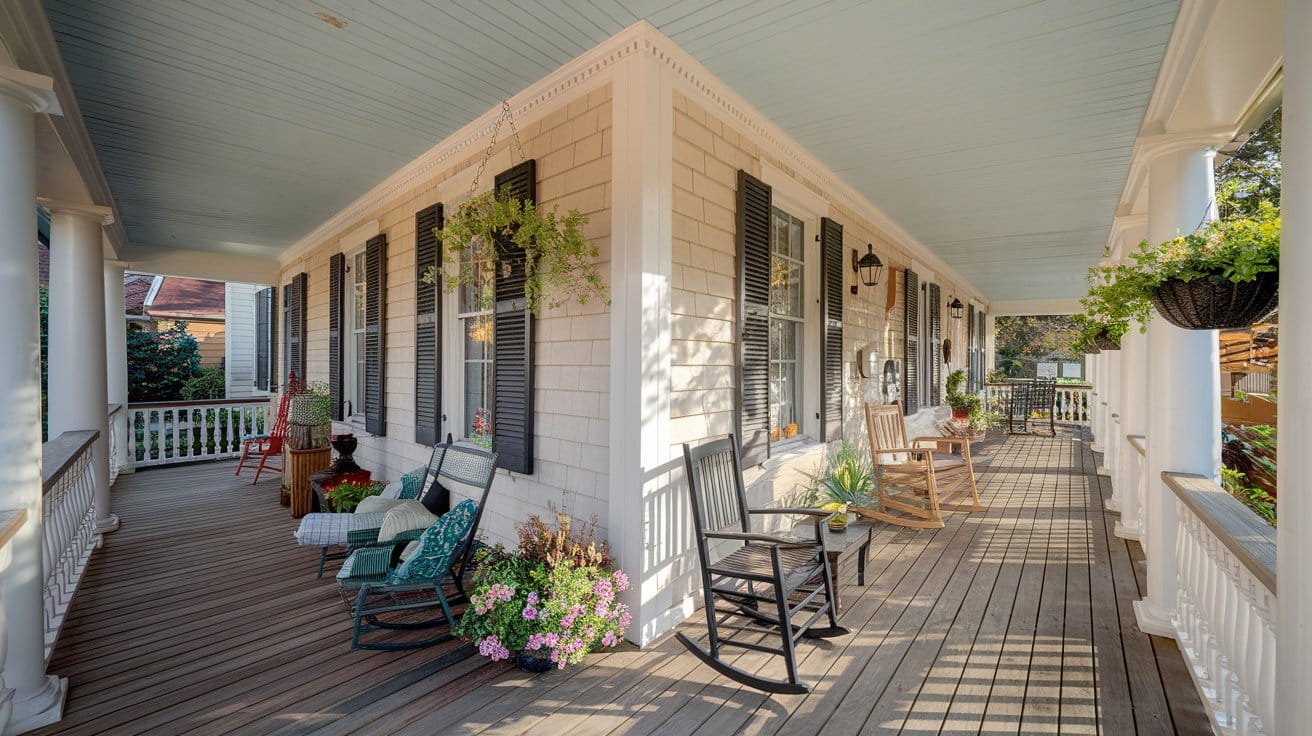
A wraparound porch extends along two or more sides of your house. It creates a continuous covered walkway around part of your home. This style is common in Southern states and farmhouse designs.
Key Features:
- Runs around at least two corners
- Wide enough for furniture on multiple sides
- Supported by columns or posts
- Often includes railings
Pros: Maximum outdoor space, multiple entry points, continuous shade around the house, and Impressive curb appeal
Cons: Higher construction and maintenance costs, takes up more yard space, and may overwhelm smaller homes
6. Farmer’s Porch / Bungalow Porch

A farmer’s porch runs across the full front of the house. It features a low-pitched roof and simple columns or railings. This classic style adds charm to country and craftsman homes.
Key Features:
- Spans the entire front width
- Usually one story high
- Thick or square columns
- Simple railings, often wood
- Wide enough for rocking chairs
Pros: Timeless appeal, lots of seating space, works with many home styles, and relatively affordable to build
Cons: Requires regular painting or staining, and less privacy than back porches
7. Three-Season Porch
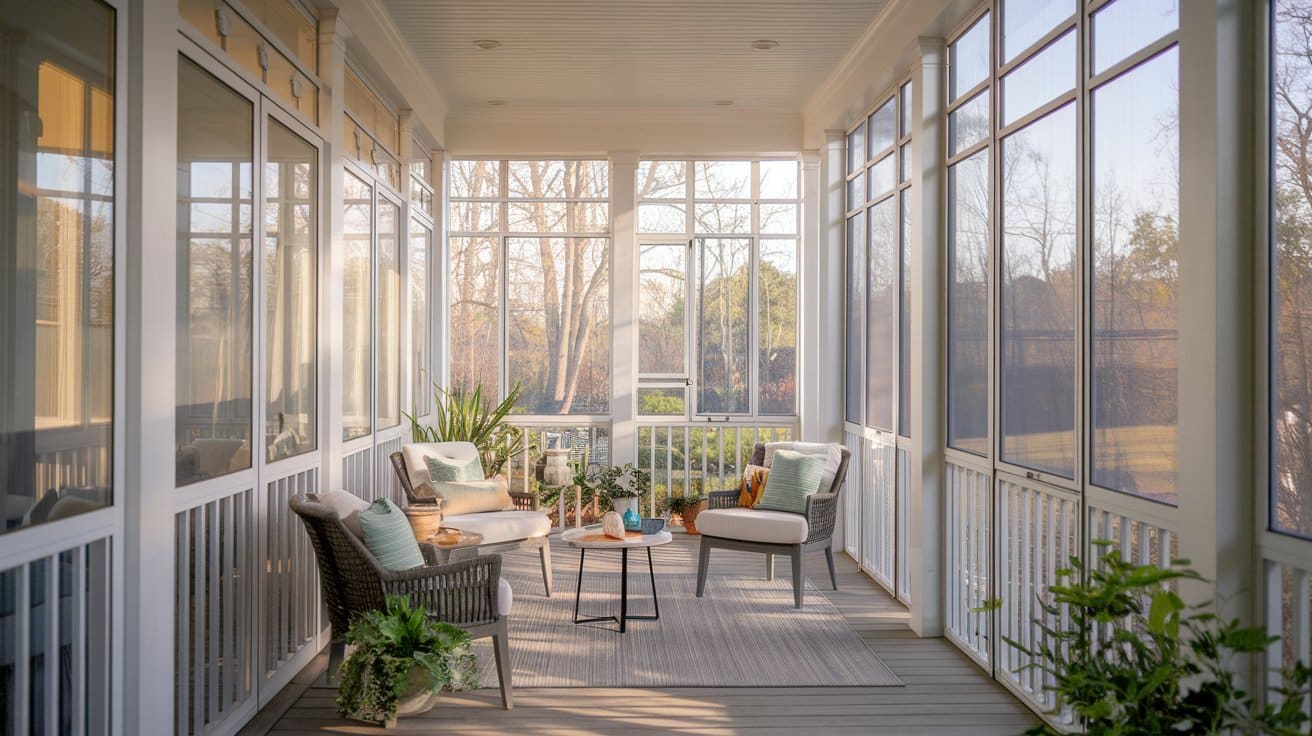
A three-season porch sits between a screened porch and a sunroom. It has removable glass or vinyl panels instead of permanent walls. You can open or close the panels based on the weather.
Key Features:
- Vinyl or glass window panels
- Screens beneath the panels
- Insulated in some cases
- More enclosed than screened porches
Pros: Usable most of the year, more protection than screens alone, and still feels connected to the outdoors
Cons: Panel storage is needed off-season, not comfortable in extreme cold, and more expensive than screened porches
8. Four-Season Porch (Sunroom)
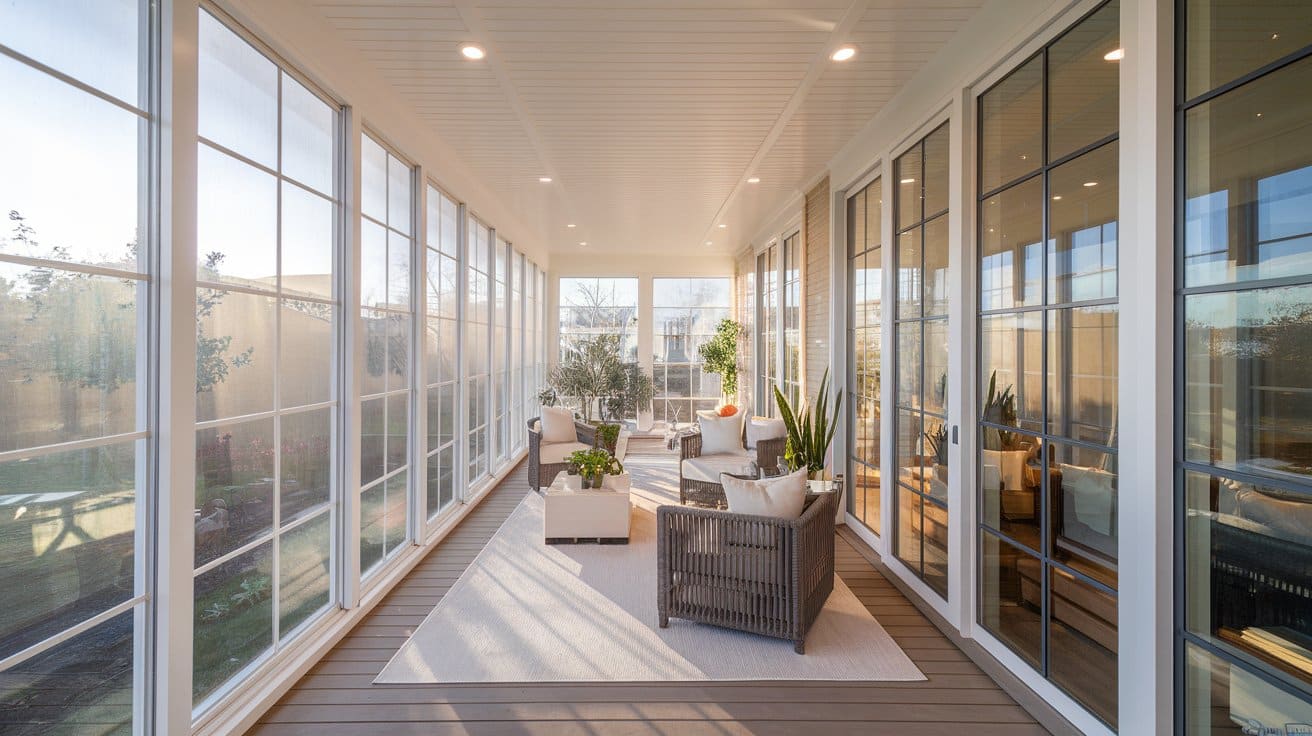
A four-season porch is fully enclosed with insulated glass windows. It includes heating and cooling. This turns it into a true extension of your indoor living space.
Key Features:
- Insulated walls and windows
- HVAC connection or separate units
- Finished interior like a regular room
- Often includes electrical outlets
Pros: Comfortable in all seasons, adds significant home value, and can be used as an office, dining, or lounge
Cons: The highest cost among porch types, requires permits and inspections, and needs regular HVAC maintenance
9. Detached Porch or Pavilion
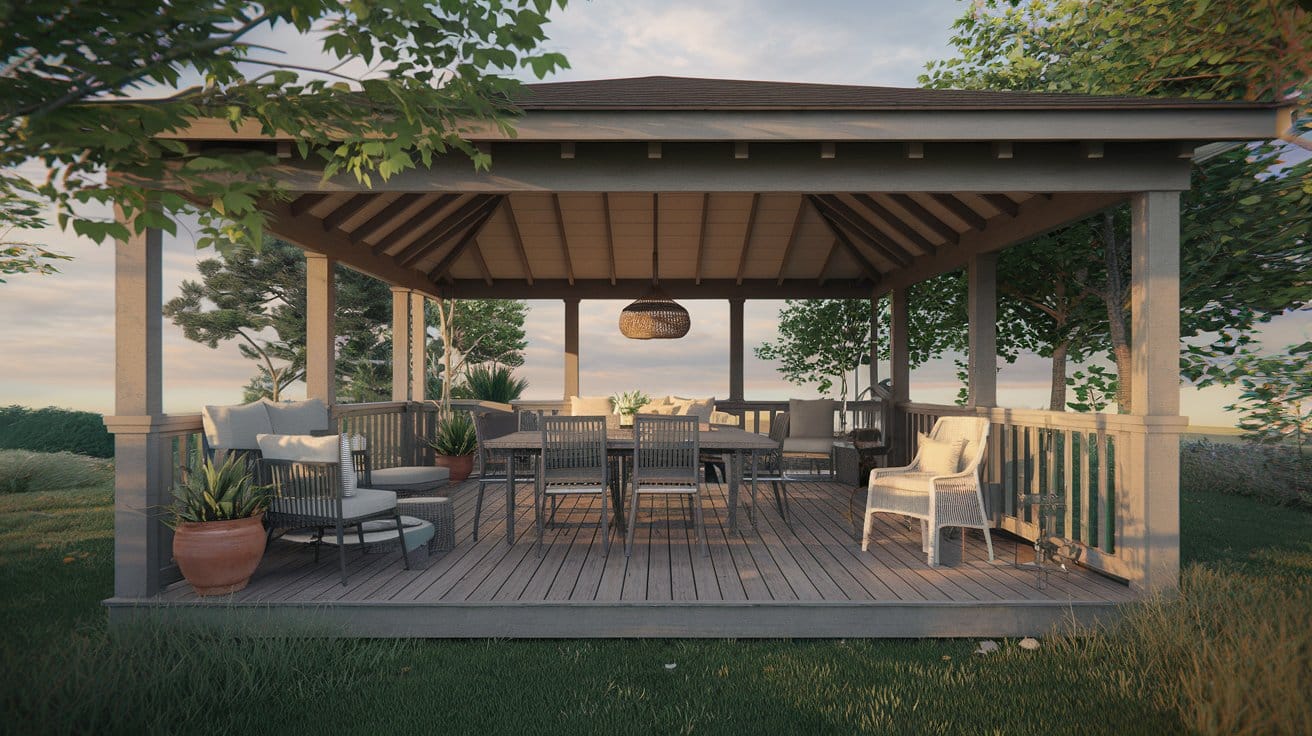
A detached porch stands apart from your house. It sits in your yard or garden. This freestanding structure provides a separate outdoor retreat.
Key Features:
- Freestanding with its own roof
- Can be open, screened, or partially enclosed
- Often located near pools, gardens, or patios
- Includes posts or columns for support
Pros: Offers privacy away from the house, flexible placement in the yard, and can serve many purposes
Cons: More expensive than attached porches, requires a path or walkway, and may need separate utilities
10. Specialty & Regional Porch Styles

Some porch types reflect specific climates or cultural traditions. These regional styles solve local weather challenges while adding unique character.
1. Veranda / Verandah: A veranda wraps around the home like a wraparound porch. It’s common in tropical and subtropical regions. The wide roof provides shade in hot climates.
2. Lanai: A lanai is a Hawaiian-style covered porch. It’s usually screened or partially enclosed. The design emphasizes indoor-outdoor living.
3. Loggia: A loggia is an Italian-inspired covered walkway. It features arched openings and columns. This style works well with Mediterranean homes.
4. Rain Porch (Carolina Porch): A rain porch has an extra-deep roof overhang. It keeps rain away from doors and windows. This design suits wet climates.
With so many porch styles available, the next step is deciding which one best fits your home, lifestyle, and climate.
How to Choose the Right Porch for Your Home?
Picking the best porch type comes down to a few key factors. Think about your home’s style, your local weather, and how you plan to use the space.
1. Match Your Home’s Architecture
Your porch should complement your house design. Modern homes look best with simple open porches, colonial homes suit traditional porches with columns, and farmhouses shine with wraparound or farmer’s porches.
2. Consider Your Climate
In hot regions, choose shaded or open porches with fans and light-colored materials. Rainy areas benefit from screened or three-season porches with moisture-resistant flooring.
Cold climates need four-season porches built to withstand snow loads and freeze-thaw cycles. Buggy areas require screened porches with doors and bug-resistant lighting.
3. Think About Purpose & Lifestyle
Decide how you’ll use your porch. For entertaining, consider a back porch or detached pavilion with space for dining. For relaxing, a screened or three-season porch with comfortable seating works best.
To boost curb appeal, front porches, wraparound designs, or traditional farmer’s porches are ideal. For privacy, place porches at the back or use detached pavilions surrounded by plants.
4. Budget & Maintenance
Lower-cost options include open front porches or simple covered back porches, while wraparound porches, four-season sunrooms, and detached pavilions are more expensive.
Maintenance considerations include staining or painting wood, replacing screens, cleaning glass, inspecting roofs, and choosing composite materials for lower upkeep.
By considering your home’s style, climate, lifestyle, and budget, you can choose a porch that’s both beautiful and functional for years to come.
Conclusion
The best types of porches depend on three things: your home’s style, your local weather, and how you plan to spend time outdoors.
A screened porch keeps bugs away in summer. A wraparound porch adds Southern charm and multiple seating zones.
Four-season sunrooms work year-round in cold climates. Open covered porches suit hot, dry areas.
Start by identifying your main goal: entertaining guests, creating a quiet retreat, or boosting curb appeal. Then match that goal with a porch type that fits your budget and maintenance preferences.
Ready to add an outdoor living space? Contact local porch builders to discuss designs that complement your home and lifestyle needs.

